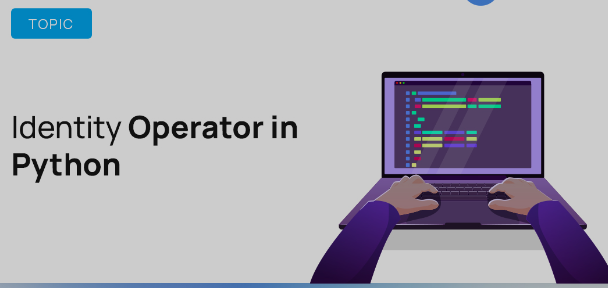
Python Identity Operators are used to compare the objects, not if they are equal, but if they
are actually the same object, with the same memory location.
These operators compare the memory location of two objects, not their values. If two objects
are identical, i.e., if they are stored in the same memory location, the is operator will
return True. On the other hand, if the objects are not identical, the is operator will
return False.
The isnot operator can be used to determine whether two objects are not the same. If the
objects are identical, the isnot operator will return False. However, if the objects are not
identical, the isnot operator will return True.
In conclusion, Python Identity Operators are useful for determining if two objects are the
same. By using these operators, we can avoid confusion and ensure that our code is executing
as intended.
Python is a versatile programming language that is widely used for various applications. One
of the important concepts in Python programming is the use of identity operators, which are
used to compare the memory locations of two objects. In this article, we will explore the
is and is not identity operators in Python.
What are Identity Operators?
In Python, identity operators are used to compare the memory locations of two objects. These
operators compare the id() of the objects, which is a unique identifier of
the object's memory location. If two objects have the same id(), it means
that they are referring to the same memory location. Otherwise, they are different objects.
The two identity operators in Python are is and is not.
The is operator returns True if two objects have the same
id(), while the is not operator returns True if they have
different id().
The is Operator
The is operator is used to compare the memory locations of two objects. It returns True if the two objects have the same id(), and False otherwise. The syntax for the is operator is as follows:
python code
object1 is object2
where object1 and object2 are the objects to be compared.
Let's see an example to understand how the is operator works:
python code
a = [1, 2, 3]
b = [1, 2, 3]
c = a
print(a is b) # False
print(a is c) # True
In the above example, we have created two lists a and b, which have the same elements. We have also created another list c and assigned it to a. When we use the is operator to compare a and b, we get False, because a and b are two different objects with different memory locations. However, when we compare a and c, we get True, because a and c are referring to the same memory location.

The is not Operator
The is not operator is used to compare the memory locations of two objects. It returns True if the two objects have different id(), and False otherwise. The syntax for the is not operator is as follows:
python code
object1 is not object2
where object1 and object2 are the objects to be compared.
Let's see an example to understand how the is not operator works:
python code
a = [1, 2, 3]
b = [1, 2, 3]
c = a
print(a is not b) # True
print(a is not c) # False
In the above example, we have used the same lists a, b, and c as in the previous example. When we use the is not operator to compare a and b, we get True, because a and b have different memory locations. However, when we compare a and c, we get False, because a and c are referring to the same memory location.
Conclusion
In conclusion, identity operators is and is not are used to
compare the memory locations of two objects in Python. The is operator
returns True if two objects have the same id(). Python
Identity Operators are a crucial aspect of programming in Python, and mastering them can
help us become better developers.
At PLOVER, we
take pride in offering a diverse range of remote work options, and we understand that
finding the right job can be a challenging task. That's why all the jobs listed on our
platform are verified by us to ensure that they meet our strict criteria. We make sure that
each job is remote, pays in USD, and meets our working conditions, so you can focus on
finding the best fit for you.
final thought


by Harsh Verma
final thought

